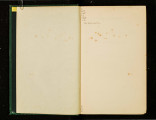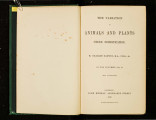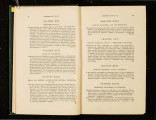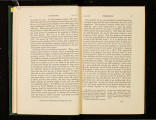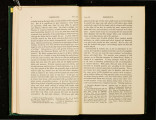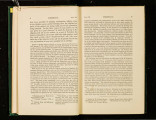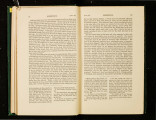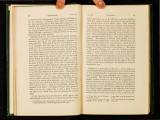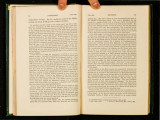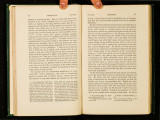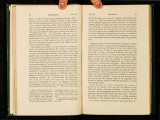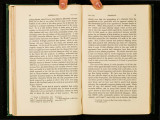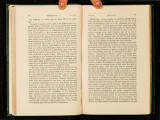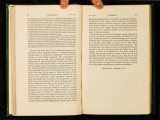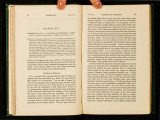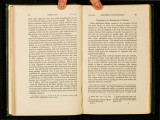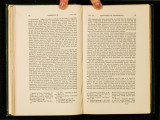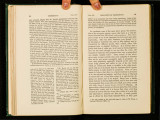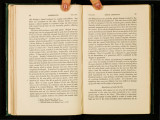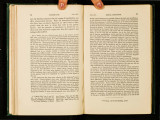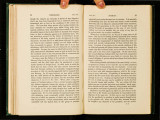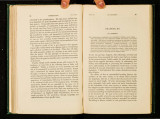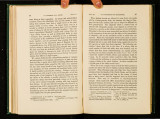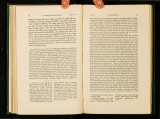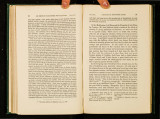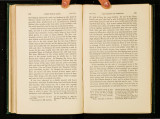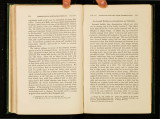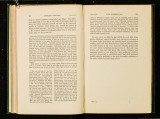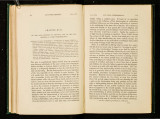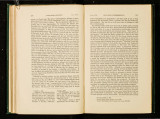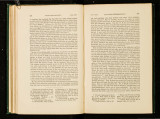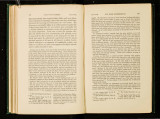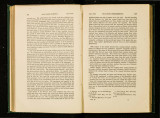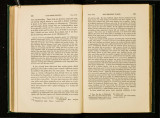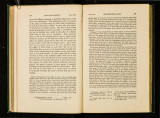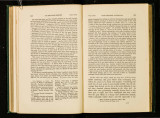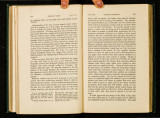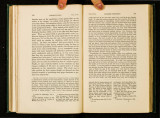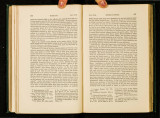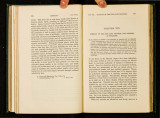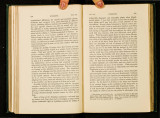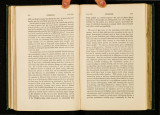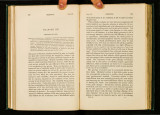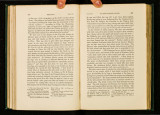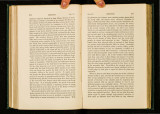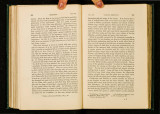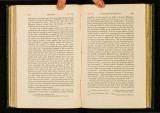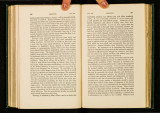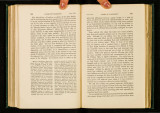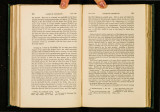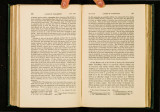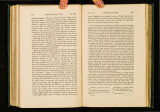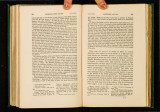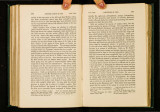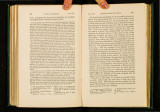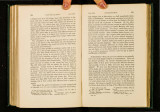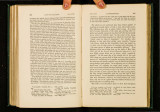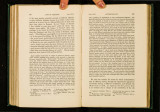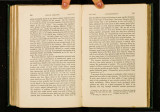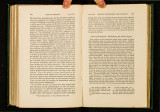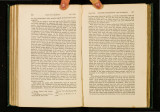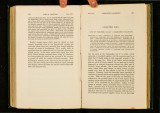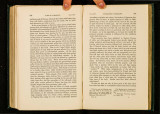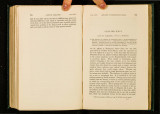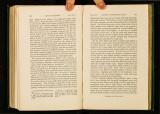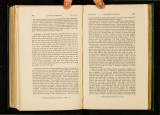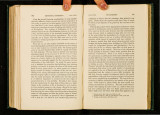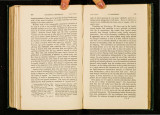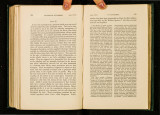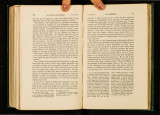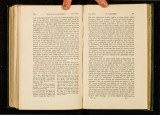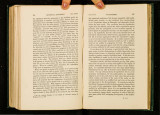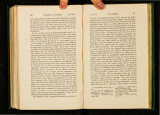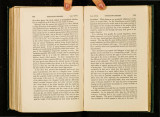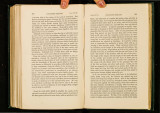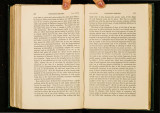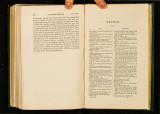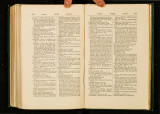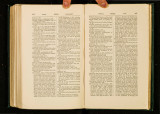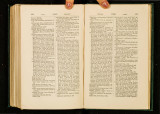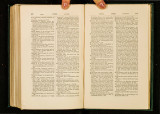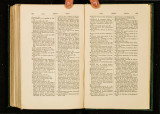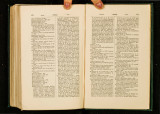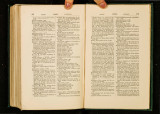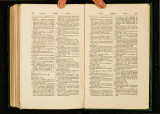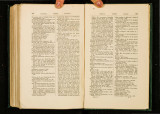| OCR Text |
Show 138 GOOD FROM CROSSING. CHAP. XVII. neously self-fertilised produced fruit, each containing on an average 21·3 seed whilst fruit from fourteen crossed flowers contained 24·1 seed. R~turning to P. alata, I have received (1866) some interesting details from Mr. Robinson Munro. Three plants, including one in England, have already been mentioned which were inveterately self-sterile, and Mr. Munro informs me of several others which, after repeated trials during many years, have been found in the same predicament. At some other places, however, this species fruits readily when fertilised with its own pollen. At Taymouth Castle there is a plant which was formerly grafted by Mr. Donaldson on a distinct species, name unknown, and ever since tho operation it has prod·uced fruit in abundance by its own pollen; so that this small and unnatural change in the state of this plant has restored its self-fertility! Some of the seedlings from the Taymonth Castle plant wore found to be not only sterile with their own pollen, but with each other's pollen, and with the pollen of distinct species. Pollen from the Taymouth plant failed to fertilise certain plants of the same species, but was successful on one plant in the Edinburgh Botanic Gardens. Seedlings were raised from this latter union, and some of their flowers were fertilised by Mr. Munro with their own pollen; but they were found to be as self-impotent as the mother-plant had always proved, except when fertilised by the grafted Taymouth plant, and except, as we shall see, when fertilised by her own seedlings. For Mr. Mumo fertilised eighteen flowers on the self-impotent mother-plant with pollen from these her own self-impotent Reedlings, and obtained, remarkable as the fact is, eighteen :fine capsules full of excellent seed! I have met with no case in regard to plants which shows so well as this of P. alata, on what small and mysterious causes complete fertility or complete sterility depends. The facts hitherto given relate to the much-lessened or completely destroyed fertility of pure species when impregnated with their own pollen, in comparison with their fertility when impregnated by distinct individuals or distinct species ; but closely analogous facts have been observed with hybrids. Herbert states 73 that having in flower at the same time nine hybrid Hippeas~~ ums, of complicated origin, de~cended fi·om several species, he found that almost every flower touched With pollen from another cross produced :: s~ed ab~dantl~, and those which were touched with their own pollen e1ther failed entrrely, or formed slowly a pod of inferior size, with fewer " seeds." In the 'Horticultural Journal' he adds that "the admission of "the pollen of another cross-bred Hippeastrum (howe~er complicated the "cross) to any one flower of the numoer, is almost sure to check tho fruc" tification of the others." In a letter written to me in 1839, Dr. Herbert says that he had already tried these experiments during five consecutive years, and he subsequently repeated them, with the same invariable result. 73 'Amaryllidacere,' 1837, p. 371; 'Journal of Hort. Soc.,' vol. ii., 1847, p. 19. CuAP. XVII. SELF-IMPOTENT PLANTS. 139 He was thus led to make an analogous trial on a pure species, namely, on the Jiippeastrum aulicum, which he had lately imported from Brazil: this bulb produced four flowers, three of which were fertilised by their own pollen, and the fourth by the pollen of a triple cross between H. bulbulosum, reginre, and vittatum; the result was, that " the ovaries of the three first flowers "soon ceased to grow, and after a few days perished entirely: whereas the "pod impregnated by the hybrid made vigorous and rapid progress to "maturity, and bore good seed, which vegetated freely." This is, indeed, as Herbert remarks, "a strange truth," but not so strange as it then appeared. As a confirmation of these statements, I may add that Mr. M. Mayes,74 after much experience in crossing the species of Amaryllis (Hippeastrum), says," neither the species nor the hybrids will, we are well aware, produce seed so abundantly from their own pollen as from that of others." So, again, Mr. Bidwell, in New South Wales/5 asserts that Amaryllis belladonna bears many more seeds when fertilised by the pollen of Brunswigia (Amaryllis of some authors) Josephinre or of B. multiflora, than when fertilised by its own pollen. Mr. Beaton dusted four flowers of a CyTtanthus with their own pollen, and four with the pollen of Vallota (Amaryllis) purpurea; on the seventh day "those which received their own pollen slackened "their growth, and ultimately perished; those which were crossed with "the Vallota held on." 76 These latter cases, however, relate to uncrossed species, like those before given with respect to Passiflora, Orchids, &c., and are here referred to only because the plants belong to the same group of Amaryllidacere. In the experiments on the hybrid Hippeastrums, if Herbert had fo~d that the pollen of two or three kinds alone had been more efficient on certain kinds than their own pollen, it might have been argued that these, from their mixed parentage, had a closer mutual affinity than the others; but this explanation is inadmissible, for the trials weTe made reciprocally backwards and forwards on nine different hybrids; and a cross, whichever way taken, always proved highly beneficial. I can add a striking and analogous case from experiments made by the Rev. A. Rawson, of Bromley Common, with some complex hybrids of Gladiolus. This skilful horticulturist possessed a number of French varieties, differing fTOm each other only in the colour and size of the flowers, aU descended fi·om Ganclavensis, a well-known old hybrid, said to be descended from G. Natalensis by the pollen of G. oppositijlorus.77 Mr. Rawson, after repeated trials, found that none of the.varieties would set seed with their own pollen, although 74 Loudon's ' Gardener's Magazine,' vol~ xi., 1835, p. 260. 75 ' Gardener's Chronicle,' 1850, p. 470. 76 'Journal Hort. Soc.,' vol. v, p. 135. Tho seedlings thus raised were given to the Hort. Soc. ; but I find, on inquiry, that they unfortunately died the following winter. 77 Mr. D. Beaton, in 'Journal of Hort.,' 1861, p. 453. Lecoq, however (' De la Fecpnd.,' 1862, p. 3G9), states that this hybrid is descended from G. psittacinus and cardinalis; but this is opposed to Herbert's experience, who found that the former species could not be crossed. |




